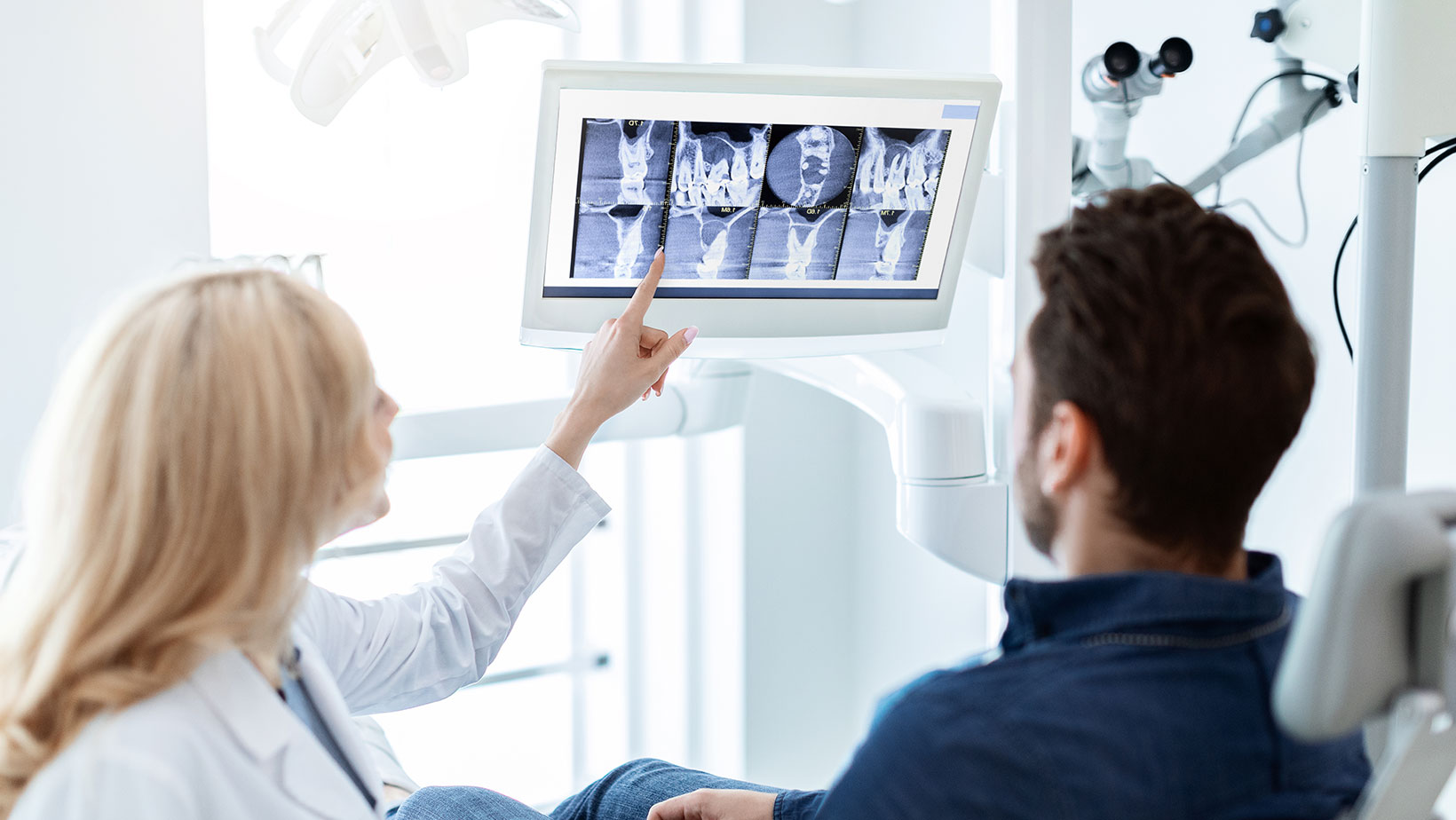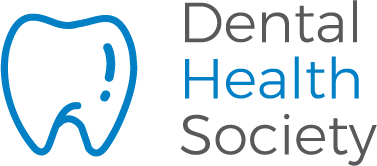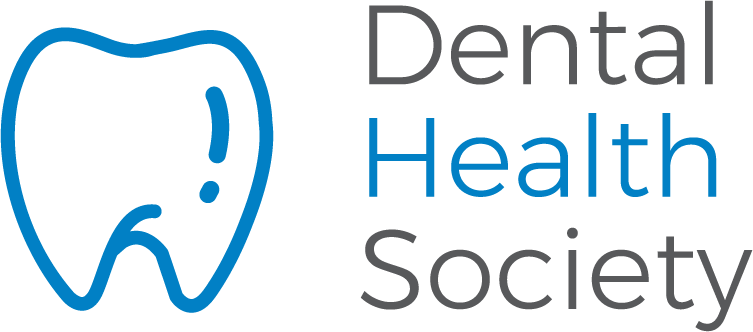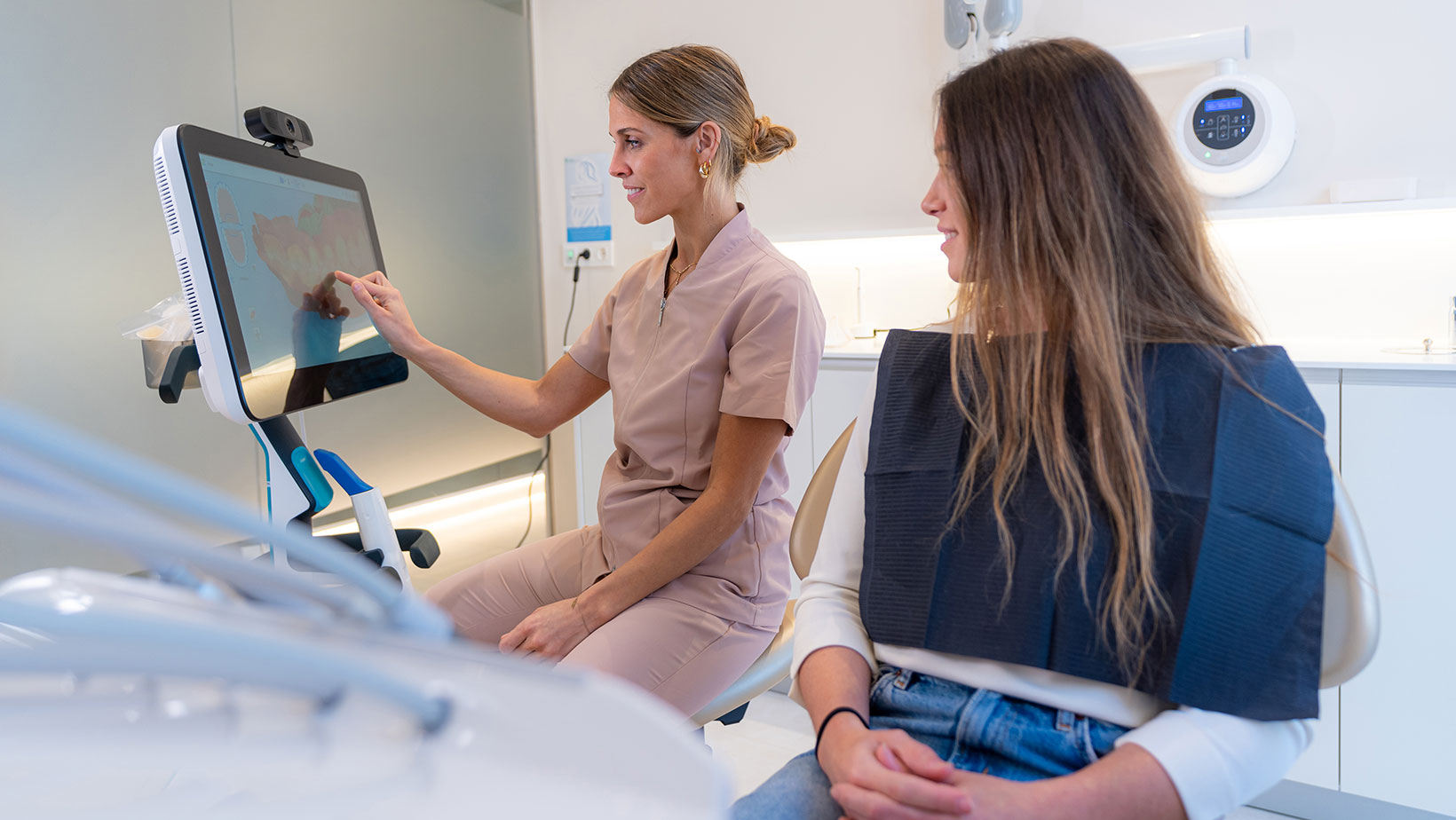It’s understandable why some patients feel alarmed at the thought of “artificial intelligence” being used in the dental office. The idea of robot dentists and hygienists seems a bit scary! But the truth is that AI in dentistry isn’t replacing humans; it’s simply implementing technology that allows dentists to better diagnose and treat patients.
In fact, artificial intelligence could lead to earlier diagnosis of tooth decay, gum disease, and even oral cancer, so many dentists are adopting it into their practices. Here are some ways in which AI in dentistry is improving patient outcomes.
How Dentists Use AI
In essence, artificial intelligence is a term used for computer systems capable of performing tasks that typically require human intelligence, such as problem-solving, reasoning, learning, and decision-making. You may have heard of ChatGPT, which can write an entire paper about a certain subject, just like a human can. The program was designed using algorithms that search the web for information, then compile it into a cohesive, readable piece.
In dentistry, AI systems were developed to perform image and data analysis that humans normally do—but AI can do it better. Instead of a dentist relying only on a visual exam, they can also use AI imaging to get a clear picture of what they can’t see. Instead of only listening to a patient’s symptoms, they can also use AI software to analyze a patient’s chart, which lists other conditions that might be related to their symptoms. Overall, using AI in dentistry paints a more complete picture than traditional dentistry is capable of.

1 – Dental Imaging
According to studies cited in the Journal of Dental Sciences, AI is helping dentists to more accurately analyze X-rays and MRI scans. AI imaging software can identify potential issues that are not yet visible to the human eye, such as deteriorating enamel or early bone loss. By detecting these problems earlier, dentists can offer more affordable and less invasive treatment options to their patients.
AI imaging can help diagnose:
- Dental decay. Dentists use AI to find dental lesions in very early stages to address plaque or bacteria before it causes cavities.
- Root damage. Rather than having to perform a procedure to determine the extent of damage, artificial intelligence can help dentists tell if a root is viable or if a root canal is necessary.
- Periodontal disease. While it’s sometimes difficult to diagnose exactly how far advanced a patient’s gum disease is, AI offers automated depth probing for pinpoint staging.
- Oral cancer. Approximately 84% of oral cancer cases are treatable if detected early, but visual exams only detect about 30% of early oral cancer cases. By incorporating AI oral cancer screenings into regular dental check-ups, dentists can diagnose cancer in its early stages to improve survival rates.
- Misalignments. Using AI imaging, dentists and orthodontists can develop treatment plans for bite problems (such as TMJ disorder) and crooked teeth.
3 – Predictive Models
While traditional dentistry has taken a reactive approach, AI allows dental professionals to formulate proactive plans. AI software analyzes a patient’s complete chart including genetics, demographics, and medical and dental history to predict potential oral health risks. For instance, if a pediatric patient has several teeth that are not coming in, AI can look at a family history chart and see that hypodontia, a condition in which a child is born without one to five teeth, runs in the family. This can help the dentist plan for placement of implants or orthodontic care to close gaps. When dentists collaborate closely with patients, there’s a much better chance of minimizing or at least managing problems.
4 – Restorative Procedures
Thanks to AI, today’s dentists can create crowns that look more like real teeth and even provide better placement. According to a recent study published in Dental Materials, dental crowns generated with the help of artificial intelligence are closer to natural tooth structure than conventionally produced crowns. In addition, artificial intelligence can provide a closer fit than traditionally made crowns by analyzing data from adjacent teeth and comparing them across an extensive “library” of crown templates. This can save considerable time and cost, requiring less human adjustment than current crown production processes.
AI algorithms can also simulate implant placement and provide dentists with virtual treatment plans, optimizing the placement position and angulation for optimal outcomes.
5 – Virtual Dentistry and Orthodontic Care
When patients have an urgent question outside of office hours or a dental emergency and can’t make it into the office, virtual dentistry offers remote consultations via video or phone. For instance, if a patient has a cracked or chipped tooth, a virtual visit allows the dentist to assess the damage and determine if it requires a visit to the emergency dentist or if it can wait until morning. They can also tell the patient how to manage pain and even call in a prescription painkiller or antibiotic if needed.
Orthodontists can also use virtual dentistry to monitor patients’ progress remotely, minimizing the number of required office visits. One example is Invisalign. After having clear aligners placed on their teeth, patients are sent home with additional aligners and a special camera lens to attach to their smartphones. They then download an app to their phone and take photos of their teeth each week before switching out aligners. If the photo doesn’t show angles that the orthodontist needs to see, the app tells the patient to retake them. After the photos are submitted via the app, the orthodontist receives them and can review whether progress is on the right track and if it’s time to move on to the next aligner. This helps accelerate the fittings and can also facilitate the transition between braces, aligners, and retainers.
6 – Administrative Tasks
The benefits of AI technology don’t just apply to dental treatment itself. It also comes in handy in the front office, where it can handle administrative tasks like appointment scheduling and routine billing processes. Virtual assistants on dental websites can also answer patients’ questions or at least determine who in the office can handle the patient’s needs. By reducing administrative burdens, AI enhances overall practice efficiency and allows human staff members to focus more on interacting with patients.

Despite Advancements in AI Dentistry, Dentists Will Never be Replaced
Modern technology has led to incredible improvements in dental processes and procedures. However, AI can not provide the clinical judgment, empathy, and compassion that dentists have for their patients. Instead, dentists will simply continue to utilize AI to improve their practices and the overall patient experience.
If you’re looking for a dentist who wants what’s best for your health, click here now.


